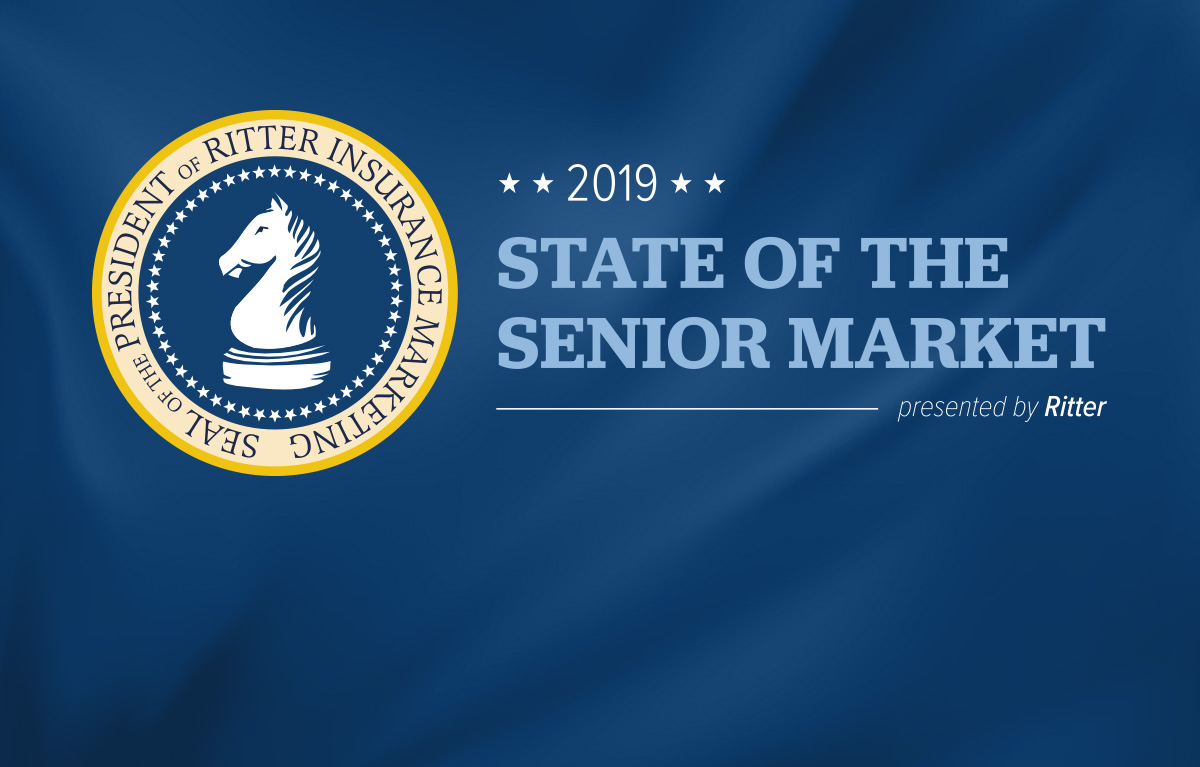Everyone on Medicare needs creditable prescription drug coverage. If you’re offering Medicare Advantage-only plans (Private-Fee-For-Service or Medicare MSA) or Medigap plans, you can easily earn more selling prescription drug insurance. We’ll tell you how!
If your clients desire to enroll in a Medicare Advantage plan, they can enroll in a Medicare Advantage Prescription Drug (MAPD) plan if one is available. Conversely, if your clients have, or will enroll in, Original Medicare and possibly a Medicare Supplement plan, they can obtain prescription drug coverage through a stand-alone PDP. A small number of counties in a few states do not offer an MAPD plan. In these counties, individuals can enroll in a Medicare Advantage plan without prescription drug coverage (PFFS or Medicare MSA) and a stand-alone PDP.
Below, we outline a few best practices for selling prescription drug plans (PDPs). Do these seven things to quickly and efficiently set clients up with the right plan for their budget and needs, earn a little more commission, and build loyalty!
Note: If your clients have an MAPD plan but plan to enroll in a stand-alone PDP, make sure they know they’ll be disenrolled from their current plan and enrolled in Original Medicare.
Listen to this article:
1. Ask Your Clients for a List of Their Prescriptions Right Away
After having your clients sign a Scope of Appointment (SOA), one of the first things you should do is ask them for a list of their prescription drugs. Knowing what prescriptions they take will be key to you finding them the best plan. After all, you are looking for a plan to help pay for their current or future prescriptions, and different plans help cover certain drugs differently. It’s your job to help them find the plan that makes their prescriptions the most affordable.
To make it easy, inform your clients they can get a list of their medications from the pharmacy where they refill their prescriptions. For most large pharmacies, your clients can obtain and email this list to you themselves by registering for an online account. Alternatively, if you have a free Shop & Enroll site, you can also ask your clients to create a free secure profile on your site, enter their prescription drugs (including dosage and quantity), and then share that information with you. You can then use this information to estimate their drug costs with different plans with the simple click of a button!
2. Find Out If They Qualify for Additional Help
There are government and state programs that can help make your clients prescriptions and prescription drug coverage more affordable for them. For example, Extra Help is a government program that aims to assist eligible beneficiaries in paying the copays, premiums, and deductibles of their PDPs. To be eligible, your clients’ incomes and assets must be below certain levels determined by their state. Those who have full Medicaid coverage, membership in a Medicare Savings Program, or Supplemental Security Income benefits automatically qualify for the program. If your clients can’t get Extra Help, they may qualify for a state pharmaceutical assistance program (SPAP). SPAPs can pay for your clients’ Part D coverage entirely](/blog/how-spaps-and-their-seps-can-bring-you-new-business “How SPAPs and Their SEPs Can Bring You New Business”) or at least lower the cost of their prescription drugs. Their availability and eligibility requirements can be found on Medicare.gov and vary by state.
According to a Georgetown University and University of Chicago study released in September 2010, 2.3 million Medicare beneficiaries who weren’t enrolled in the government’s Medicare Extra Help program may have qualified for it. Programs like Extra Help and SPAPs can save your clients thousands of dollars on their prescriptions annually, so it’s important you help spread the word about them. Further, because your clients’ financial circumstances can change at any time, it’s important that they contact you if their income or resources decline. Beneficiaries who become newly eligible for Medicaid or Extra Help qualify for a Part D Special Enrollment Period to enroll in a new plan.
3. Use a Medicare Plan Finder to Compare Plans
Once you’ve determined if your clients qualify for additional help, you can get to the core of your work: finding the right PDP for them. Performing a simple search using a Medicare plan finder like Shop & Enroll or Medicare.gov’s plan finder is a great way to compare options. Both will let you compare plans, but the Shop & Enroll plan finder, in tandem with the Ritter Platform, allows you estimate drug costs for PDPs based on your clients’ stored drug lists, send prefilled applications, and receive credit for any enrollment made via the site. With Medicare.gov’s plan finder, your clients can also enroll in a plan via the site, but it leads to a direct sale with the insurance company, and you will not be the Agent of Record. There are pros for both tools so do your research and use the one that will work best for you and your clients!
4. Narrow Down and Recommend a PDP
As you’re searching, your top priority should be finding PDPs that work with your clients’ medicinal needs. Examine plans’ copays, premiums, deductibles, and network restrictions next. If a client is unwilling to try less expensive drugs first, make sure you’re looking at plans that don’t require step therapy. Additionally, check if plans work with programs that can offer your clients help with paying for prescriptions.
When it’s time for you to help your clients make their final decision, provide the best recommendations you can. If they take high-cost prescription drugs, recommend plans that offer coverage for them in the gap stage. Do they take several generic drugs? Suggest plans with low copayments. Don’t have many prescription drugs? Advise they go with a low-premium plan. You’re the expert. Show your clients you know your stuff.
5. Make Sure Your Clients Understand Their New PDP
Insurance is one thing almost everybody has, yet only a select group of people understand it. A 2016 study by PolicyGenius and Radius Global Research found only 50 percent of the Americans they surveyed could correctly define “deductible,” only 42 percent could correctly define “out-of-pocket maximum,” and only 22 percent could correctly define “coinsurance.”
Teaching your clients what basic health insurance terms like these mean is a great way to set yourself apart from your competition and add value to your services. Making certain your clients know how much they will pay for their prescriptions now, after they hit the coverage gap, and after they reach their out-of-pocket limit is also a good move. Doing so can build your credibility and your clients’ trust in you.
6. Let Them Know Other Ways They Can Save
Another way to lock in your role as your clients’ advisor is to inform them of other ways they can reduce their out-of-pocket expenses. Oftentimes, your clients can spend less on their prescriptions by switching to generic or brand-preferred drugs. Ask them if they’re aware of that. Additionally, check to see if your clients can save money by utilizing their plan’s in-network, preferred pharmacies or mail-order pharmacies, and let them know if they can. Even the pharmaceutical companies that produce your clients’ drugs may offer assistance programs to help pay for them. See if your clients qualify for one or more of these programs at Medicare.gov/pharmaceutical-assistance-program.
Additionally, don’t forget to confirm your clients know that they have a right to ask their plan to cover a prescription drug. Their provider can ask their plan for an exemption if a drug in a lower tier doesn’t exist or won’t work for them. Providing all this information to your clients will show them you truly have their best interests in mind.
7. Encourage Your Clients to Reevaluate Their Plan Every Year
Though seniors can change their PDP every year, research shows few review and consider switching plans during the Annual Enrollment Period (AEP). KFF found that an average of 87 percent of Part D enrollees did not switch plans during any of the four AEPs between 2006 and 2010. However, when averaged over the four AEPs, nearly half (46 percent) of those who changed plans had premiums that were at least five percent lower the following year. Additionally, KFF found that an average of 90 percent of PDP enrollees did not voluntarily switch plans for the following year during any of the AEPs between 2007 and 2016. According to the organization’s analysis of the Medicare Current Beneficiary Survey, in 2017, over one-third of beneficiaries said it was very or somewhat difficult to compare options.
So lastly, at your final appointments with clients, stress to them the importance of reevaluating their PDPs during AEP. What was their best option one year, may not be the next. Plans can change their premiums, copays, deductibles, formularies, network, and preferred pharmacies. Additionally, your clients could become newly eligible for additional help. Express to your clients that you’re more than happy to help them shop around and ensure they know how to get in touch with you in the future. By tackling this topic, you’re not only giving them sound advice, but you’re also securing their future business.
PDPs are a natural cross-sell with Medicare Supplements and Medicare Advantage only plans. Those who employ these best practices when selling them will not only maximize their time, but also their production and profits.
An old version of this article was previously published in the August 2017 issue of California Broker Magazine. It has been updated to include fresh ideas and information more relevant to the 2021 Annual Enrollment Period.





Share Post